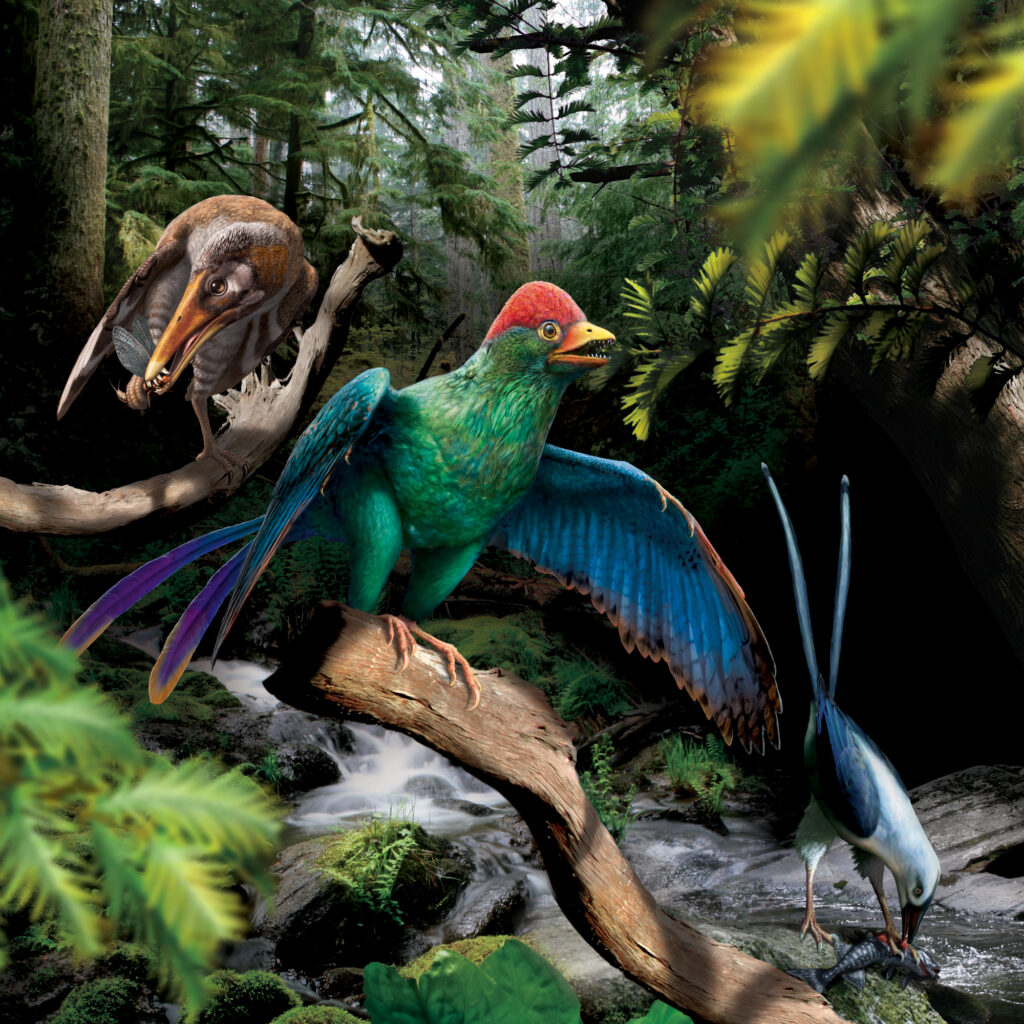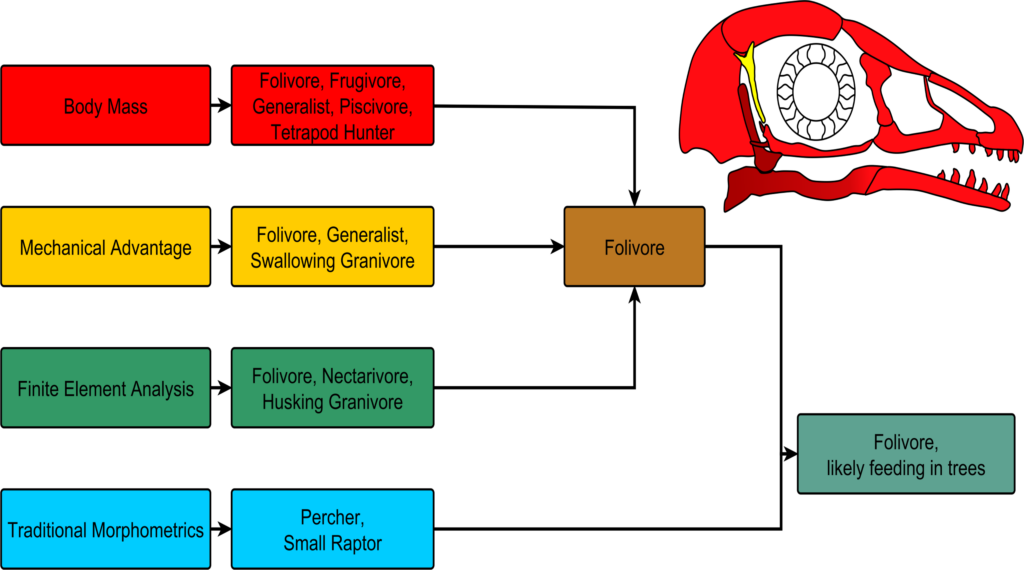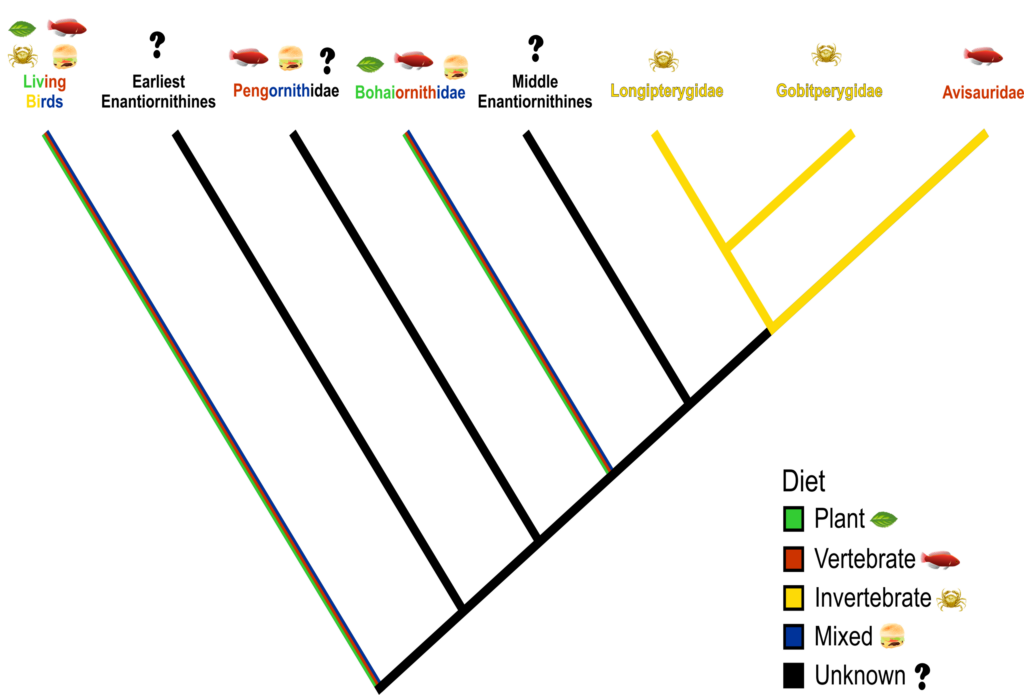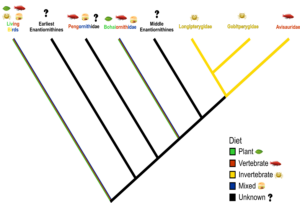CUHK
News Centre
CUHK palaeontologist uncovers the diverse diets of birds during the era of dinosaurs
Living birds have evolved to take advantage of nearly any food source, filling unique roles in today’s ecosystems. An international palaeontological research team led by Dr Michael Pittman, Assistant Professor at The Chinese University of Hong Kong’s (CUHK) School of Life Sciences, have investigated a group of birds that constituted the majority in the era of dinosaurs, known as Enantiornithes, to understand living birds’ success in developing their diverse diets. The team found that enantiornithine birds had already developed dietary habits comparably diverse to living birds’ as early as 120 million years ago, 30 million years before the ancestors of living birds evolved. By looking at what enantiornithine and living birds have in common, the team has broadened the understanding of the reasons for living birds’ success. The findings were published in the prominent international life sciences and medicine journal eLife.
The team began their investigation into a particular family within Enantiornithes, Bohaiornithidae. This group is well-known for their large curved claws and thick teeth, which have lead past researchers to reconstruct them specialised to kill prey in their claws and crush hard foods in their mouth.
Bohaiornithidae and their unexpectedly diverse diets
The research team found over the course of its five-year study that the diet of Bohaiornithidae was more varied than in other early bird families, and more complex than academics had expected. The team carried out a quantitative comparison of body mass, skull mechanics, and claw and skull shape between Bohaiornithidae and over 9,000 species of living birds. They found that some bohaiornithid species are functionally similar to carnivores, some to herbivores and some to omnivores. The team suspects the diversity of their diet stems from the unique construction of the bohaiornithid skull.
Dr Jen Bright, a co-author of the study and a collaborator from the University of Hull, added, “The one thing that unites bohaiornithids functionally is their jaw strength; they all have thicker and more robust jaws than the other enantiornithine families we have looked at. This may have helped them diversify ecologically. Longipterygidae had the weakest jaws of the groups we have looked at and had the least dietary diversity, Pengornithidae had intermediate jaw strength with slightly more diversity, and now bohaiornithids with their strongest jaws have the most diverse diet. This makes sense conceptually: a weak jaw prevents an animal from eating hard things, but a strong jaw is often just as good or better at eating soft things.”
Study shows the success of modern birds is not unique
After observing a correlation between jaw strength and dietary diversity, the team realised that a dedicated evolutionary analysis was needed. In its new analysis, which integrates over 50 bird fossils, the team hoped to shed light on the patterns in which these birds became ecologically diverse. While the team had success with many later-evolving enantiornithine families, the diet of their common ancestor and the earliest dietary changes in Enantiornithes remain unknowable for now. Dr Pittman commented, “We need new and better fossils from the base of the enantiornithine tree. With just a few additional data points, our picture should become a lot clearer.”
While the pattern in which the enantiornithine diet evolved remains unclear, the team considers its timing to be telling. It estimates that enantiornithines took at most 25 million years to achieve their diverse spread of diets: from their origin 145 million years ago to the diverse groups studied from 120 million years ago. Notably, DNA evidence suggests that it took at least 25 million years for the ancestors of living birds to achieve their current dietary diversity.
“So it seems like whatever factors allowed for the rapid ecological diversification of living birds must have been present in the ancestor they share with enantiornithine birds,” said Dr Case Vincent Miller, the first author of the research and Dr Pittman’s former PhD student. “I am planning to further research how and why these two groups have such similar success stories, and to discover what implications that might carry for conservation efforts today.”
Dr Pittman added, “The most likely candidate for a success factor the groups share is powered flight. We have long known that powered flight provides benefits to organisms over the course of their life, but how those benefits stack up over evolutionary time is under-studied. This is exciting new ground to cover.”
The international research team also includes Professor Wang Xiao-li of Linyi University and Professor Zheng Xiao-ting of the Shandong Tianyu Museum of Nature.
The full research paper can be found at: https://elifesciences.org/articles/89871
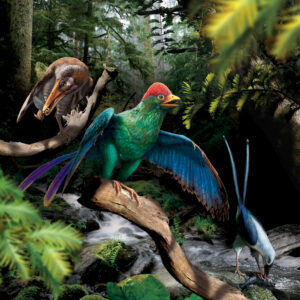
The research team produced a life reconstruction of the early bird Bohaiornis (centre), flanked by Longipteryx (left) and Pengornis (right), which lived during the Early Cretaceous period in what is now Northeastern China. They reconstructed Bohaiornis as eating plants like the pictured conifer, Longipteryx as likely eating invertebrates like the pictured mayfly, and Pengornis as a generalist feeder capable of killing large prey like the pictured fish. Image credit: Julius T. Csotonyi.


